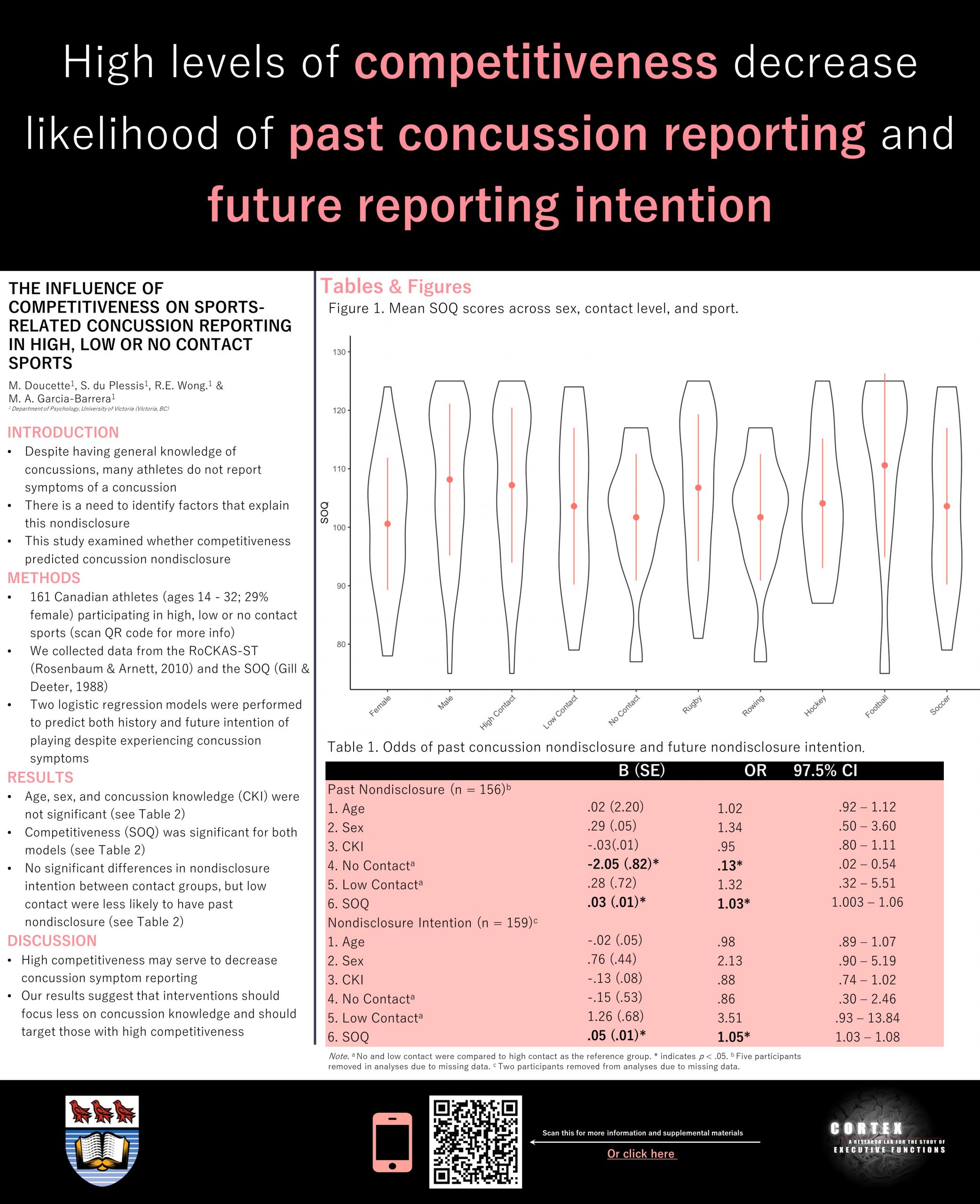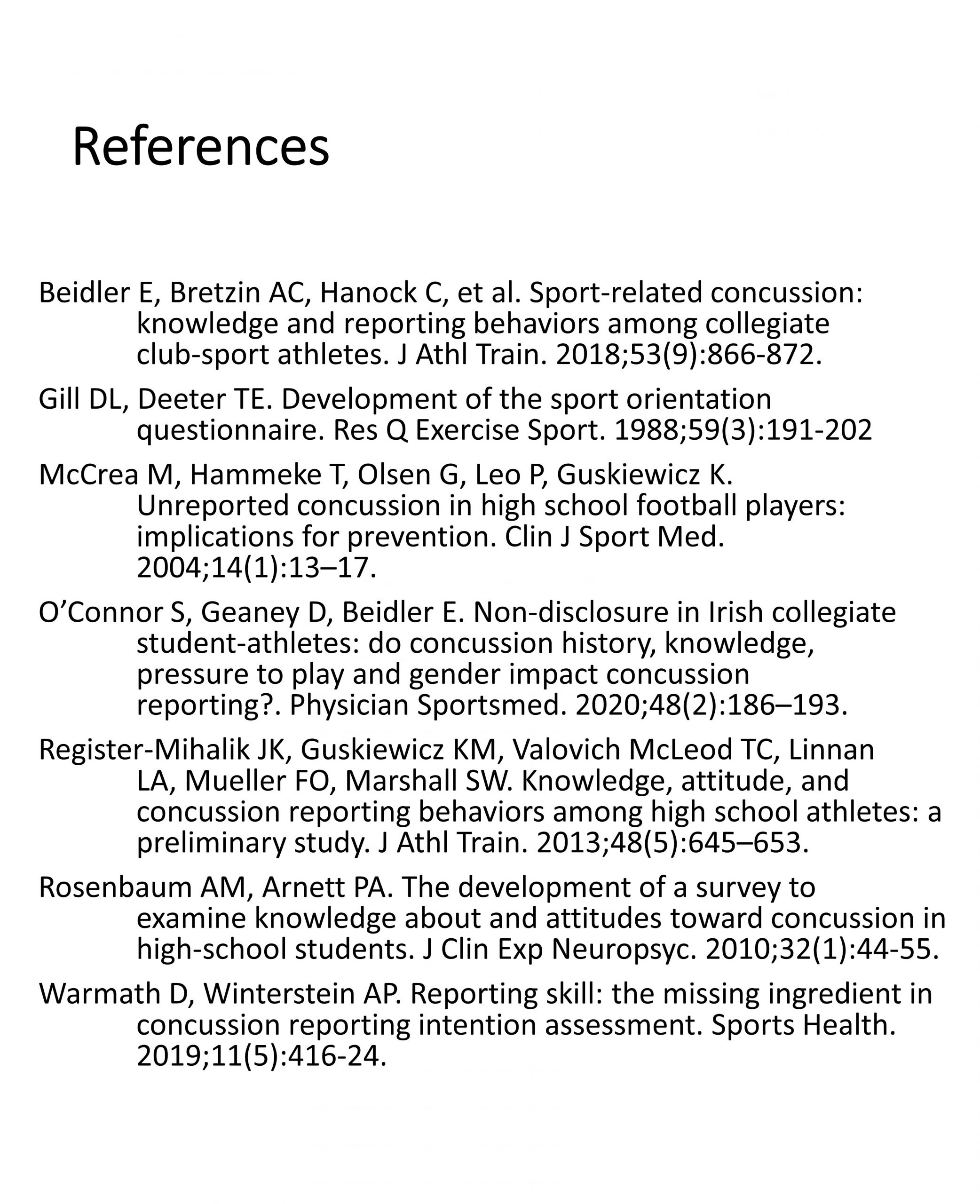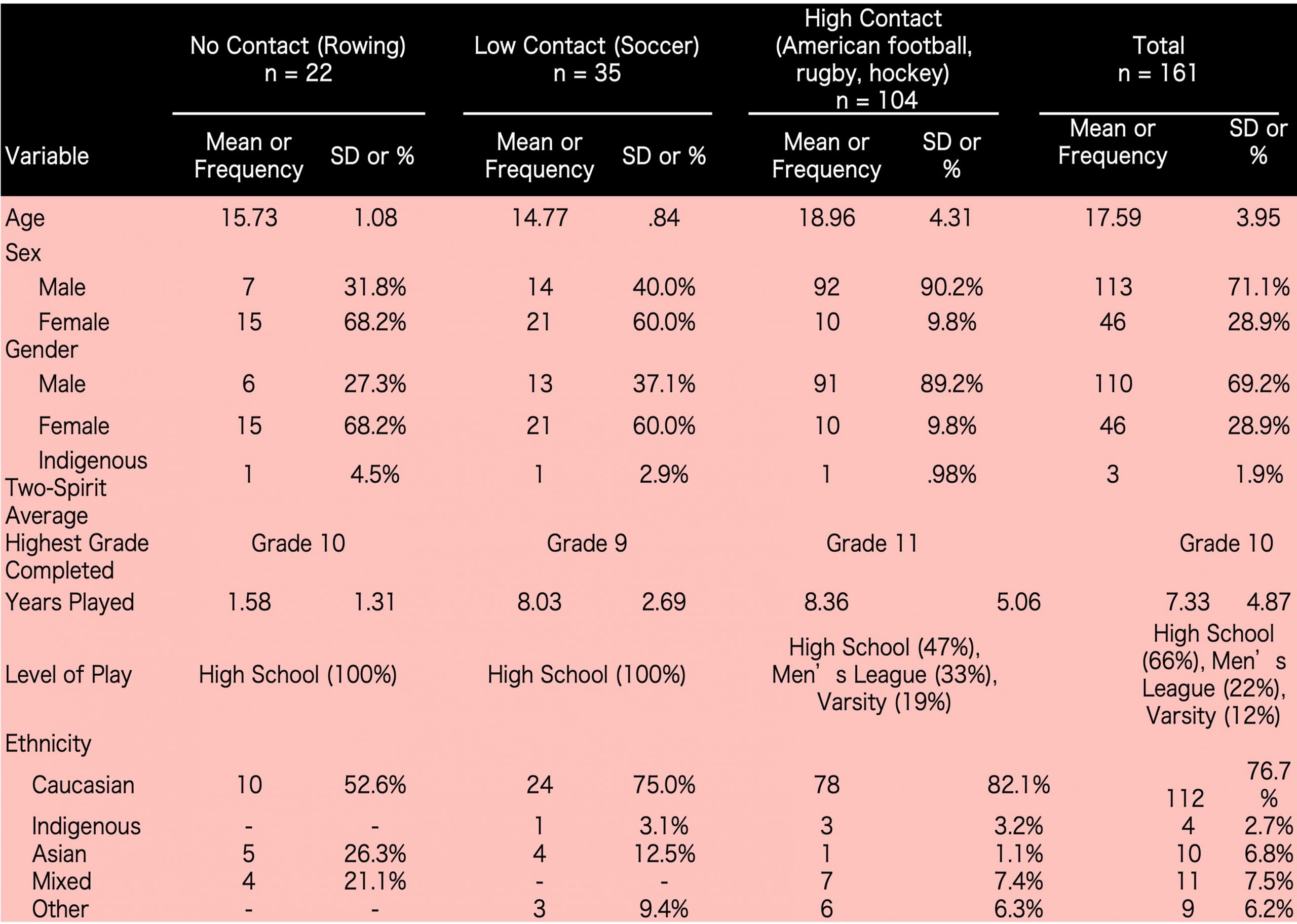INS Posters
As many as 50% of sports-related concussions (SRC) go unreported (Register-Mihalik et al. 2013; McCrea et al., 2004). Interestingly, previous research has found that having adequate concussion knowledge doesn’t impact whether or not an athlete will report a concussion (Beidler et al., 2018; O’Connor et al., 2020; Warmath & Winterstein, 2019). Thus, we decided to try an identify factors (like age, sex, sport contact level) that may help to better explain why athletes are not reporting concussion symptoms. Further, we were specifically interested in investigating the role of competitiveness on concussion nondisclosure because if an athlete is highly competitive and really wants to win, it is logical that they won’t report any SRC symptoms so they can continue to play. Therefore, we investigated whether competitiveness as well as contact level, sex, age and concussion knowledge explain an athlete’s past concussion nondisclosure and future nondisclosure intention.
We recruited 161 Canadian athletes (ages 14 – 32; 71% male) participating in high contact, low contact or no contact sports (see Table 1 below for more demographic information). We assessed their concussion knowledge and reporting using the open-access Rosenbaum Concussion Attitude and Knowledge Survey – Student version (RoCKAS-ST; Rosenbaum & Arnett, 2010). The RoCKAS-ST contains 17 true or false items and a list of 16 potential concussion symptoms, eight of which are distractor items (i.e., hair loss, excessive studying) that comprise the Concussion Knowledge Index (CKI). We modified the CKI scoring from a max of 8 points for potential concussion symptoms to 16 points in such a way that if the participant did not mark the distractor, they received one point for accuracy and if they did mark the distractor, they got a score of zero for that item. With this modification, the CKI has a maximum score of 33, with higher scores indicating greater concussion knowledge.
To assess competitiveness, we used the 25-item Sport Orientation Questionnaire (SOQ), a reliable and valid measure of sports achievement orientation that includes items that comprise three factors: goal orientation, win orientation, and competitiveness (Gill & Deeter, 1988). All 25 items are statements such as “I thrive on competition” that participants rate from 1 (Strongly Disagree) to 5 (Strongly Agree). The SOQ has a maximum score of 125, with higher scores indicating a higher level of competitiveness.
Lastly, we asked participants if they had ever experienced SRC symptoms in the past and continued to play without telling anyone about it as well as their future intention to not disclose symptoms.
We conducted two logistic regressions to explain both history and future intention of playing despite experiencing concussion symptoms. We found that age, sex, contact group, and concussion knowledge were not significant predictors of either past nondisclosure or future nondisclosure intention. Competitiveness was a significant predictor for both regression models, such that higher competitiveness predicted increased likelihood for past nondisclosure and future nondisclosure intention. These results suggest that healthcare providers, coaches, parents, and teammates should be aware that athletes tend to have adequate concussion knowledge, but this knowledge does not seem to help athletes report SRC. While it is still worth continuing to educate our athletes on the risks and symptoms related to SRC, we should also focus on being able to identify the highly competitive athletes who are most at risk of nondisclosure Instead of aiming to solely increase concussion knowledge in athletes.
Send us your comments and thoughts


